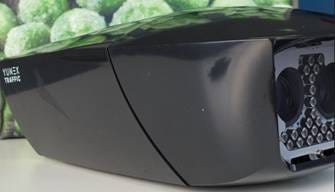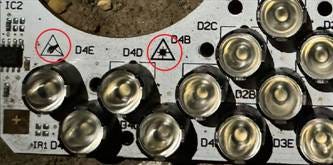ULEZ Surveillance: FUSION’s Illusion
Dr Lisa Hutchinson
London’s Ultra Low Emission Zone (ULEZ) was first introduced in April 2019 by the Mayor of London, Sadiq Khan, to supposedly tackle poor air quality. Simultaneously, non-compliance with ULEZ was linked with the controversial Congestion Charge, whereby motorists had to pay a daily payment of £12.50 to drive in London (for vehicles weighing up to 3.5 tonnes). In 2021, ULEZ was extended to cover a wider area within the city’s North and South Circular roads. In July 2023, ULEZ was extended again to include all 32 London boroughs. ULEZ zones affect millions who travel for work and, since its introduction, many have had to purchase new cars that are ULEZ compliant to travel to London. The scheme has deleteriously impacted independent, small businesses, prompting Londoners across the capital to rebel against the ULEZ. Five separate councils have launched legal challenges against the ULEZ expansion. However, these pushbacks have focused mainly on the fines issued to drivers of vehicles that do not meet so-called ULEZ emission requirements.
ULEZ: not so SMART
We must ask: is the purported function of ULEZ surveillance really about air quality? Closer examination of the technology used in these infrastructures reveals it is anything but safe, and is not being used with our consent. Aside from the pure opportunistic profiteering related to emission charges on drivers, there are much more disturbing health risks associated with ULEZ technology and infrastructures, as readers of this article will discover. Once the public understands the real reasons behind ULEZ – and how such technologies of surveillance feed into a much wider grid of Smart Cities (which forms part of the 4th industrial revolution) – they should not hesitate to oppose it. First we need to delve into FUSION technology!
FUSION Technology
Yunex Traffic is the subsidiary that makes the relevant equipment. Yunex Traffic FUSION technology has been deployed across ULEZ. Yunex acknowledges that their products emit radiofrequency signals. Fusion, the London Living Laboratory and radar are also referred to in the Yunex documentation. However, in a Freedom of Information Act (FOIA) reply, Transport for London (TfL) denied any knowledge of FUSION despite the fact that FUSION, the London Living Laboratory and radar are clearly mentioned in the Yunex documentation. Yunex FUSION Technology has been installed in Manchester, Edinburgh, Glasgow, Leeds, Birmingham, Newcastle, and London. Yunex have issued a warning stating: “It is important that all personnel are aware of the dangers to road users that could arise during repair and maintenance of traffic control equipment.” The warning continues: “Ensure that the junction area is coned and signed as necessary to warn motorists and pedestrians of any dangers and help to protect the personnel working on the site. Personnel should also ensure the safety of pedestrians, especially children, who may come into contact with parts of the signal poles.” The claims from TfL that they are unaware of Yunex FUSION technology is beyond baffling.
FUSION
So what is FUSION exactly? FUSION is the combination of Radar (collimated microwave frequencies), Lidar (collimated infrared frequencies, laser) and visible light technology (cameras). Inside the relevant Yunex equipment are laser warning signs, and the Yunex literature details the inclusion of a Heimdall radar detector. The Yunex literature details the use of FUSION in the London Living Laboratory.
The London Living Laboratory
Yunex Traffic and TfL are uniquely using a “London Living Laboratory” to test, validate and optimise FUSION. This London Living Laboratory consists of traffic intersections in London and allows newly developed features to be immediately verified directly by Yunex Traffic and TfL, ensuring a solid basis for continuous evolution and improvement of the system. Notably, FUSION has been designed to incorporate artificial Intelligence (AI) approaches to aid and improve the traffic signal optimisation process. The statement continues: “Fusion is an advanced mesoscopic simulation methodology built into its algorithm to swiftly evaluate the impact of the adaptations considered within the optimisation process”. In essence, Yunex FUSION technology is a type of surveillance approach. This is apparent in the following claim: “For each optimisation…multiple mesoscopic simulations to model all detected and forecast road users across the entire road network.” Tomography is a technique used to collect data about biometrics inside peoples` bodies, and the captured data can be scanned and backhauled to an AI computer. This technology allows TfL to scan you and pick up your biometrics at the nano or mesoscopic level.
Radar and Infrared Harms
It is well established that radar causes cancer, exemplified by the fact that radar operators are rotated so no one operator is exposed to radar for too long. Moreover, a retrospective 37-year cohort study of Belgium professional military radar operators showed that radar caused cancer. The Okuno/ICNIRP paper showed that concentrated near infrared light causes cataracts. At all Yunex-installed traffic lights, motorists and pedestrians are being bombarded with radar beams (which are carcinogenic), and collimated infrared light signals that can cause cataracts. Covid-19 injections (and many vaccinations used since 2017) as well as anaesthetics can contain nanoparticulates, magnify the radiation in the body and create an amplified effect when people are within close range of this technology.
ICNIRP and Laser Misuse Vehicles Act
ICNIRP is a body relied on by local and national governments. In their 2020 Statement of Principles, ICNIRP states that indirect effects can arise from non-ionizing radiation. “Most health effects considered in non-ionizing radiation protection are from thermal effects. However, health effects can also arise from indirect pathways. For instance, they may occur from an electric discharge arising from metallic objects charged by exposure to some types of non-ionizing radiation; these types of indirect effects are considered by ICNIRP. Other types are not, for example, heating of metallic objects in the body, such as prostheses, or an influence on the operation of medical devices, such as pacemakers. The latter electromagnetic interference effects are of a technical nature and do not fall within the remit of ICNIRP.” Thus, ICNIRP guidelines do not safeguard for radiation harms exacerbated by vaccinations containing metallic nanon particulates, metal implants, metallic objects, dental anaesthetics with metal nano particlulates, and other metal devices within the body, where the effects of radiation are multiplied!
The Laser Misuse Vehicles Act 2018 makes it an offence to point a laser beam at a vehicle. The Telecommunications Act 2003 sets out that a local authority cannot erect telecommunications equipment at a height greater than 3.0 metres without formal prior public notification. No such notification has been seen, yet this equipment is mounted at heights greater than 3.0 metres, and the equipment contains a modem. Self evidently, laser beams should not be directed at pedestrians or drivers, as noted in the Laser Vehicles Misuse Act. The fact this is going on in London and perhaps in other cities across the UK is an outrage and it should be stopped immediately. The public has never given consent to such harmful technology – so much for democracy!
Supporting the Court Case Against TfL
ACHES has been made aware that this harmful FUSION Technology involving electromagnetic radiation has been installed by TfL. This technology is being used by TfL and the equipment supplier, YUNEX, in the “London Living Laboratory”. As mentioned, FUSION technology is a combination of radar (a known carcinogen) and lidar (in this case, near infrared laser light) in conjunction with visible spectrum light equipment. Drivers and pedestrians alike, when waiting at traffic lights, will be subjected to both laser light from laser diodes and also to radar radiation. The near infrared laser light can cause cataracts (as noted in an ICNIRP paper) and radar can cause cancer, which is well known by governments all over the world.
The Information Commissioner’s Office advises that the reponses to an FOIA request by TfL made should be believed, yet the TfL, FOIA statements are not congruent with the TfL supplier, Yunex’s, own documentation. Furthermore, the equipment deployed by TfL is part of the 5G network in that it involves collimation of signal, telemetry and backhauling of the data. Initial court action has been commenced against the Information Commissioner’s Office and TfL conjointly. The next stage, via pre-action protocol, is to initiate a judicial review under the Aarhus Convention on environmental grounds and including reference to the grounds detailed above. TfL and the Greater London Authority (GLA) have lost in the courts already on a non- related matter in connection with ULEZ. These two new court cases will expose the harm of ULEZ equipment.
The ULEZ “cameras” have Yunex Traffic emblazoned on the side of them as shown below and in addition the diode array in the cameras have laser warnings as also shown below:
Yunex Traffic on the side of a ULEZ “camera”:
Laser Warnings inside the ULEZ “camera” on the diode panel board:
ACHES was established to promote, enhance and protect human and environmental wellbeing.
If you would like to donate and support the court actions:
https:www/givesendgo/GEZKP





